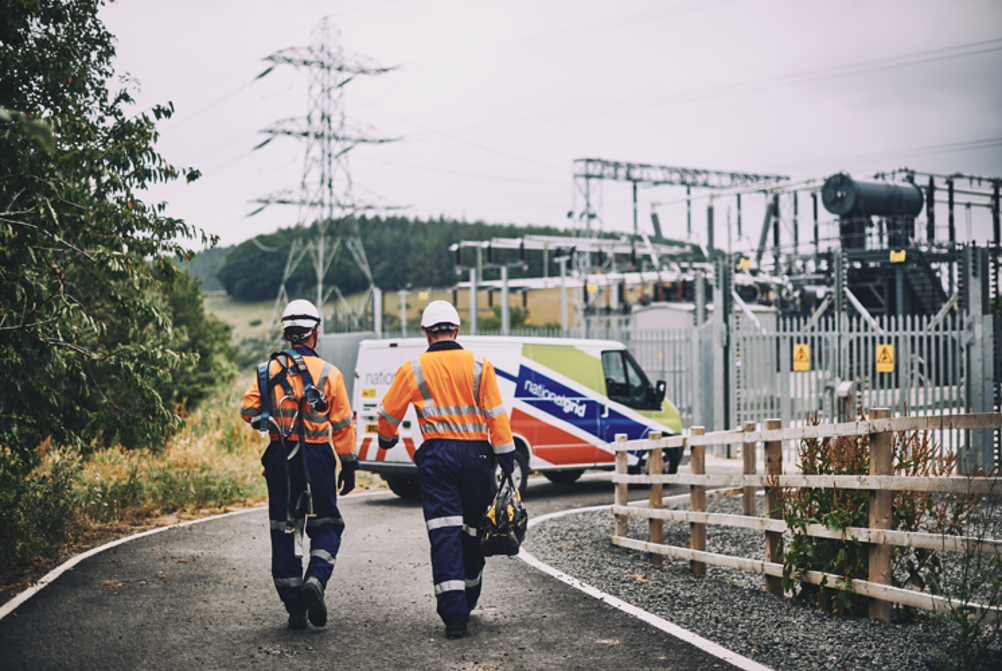Category: Energy & Environment
Headline Sponsor: Babcock International Group
Project: Distributed ReStart~
Partners: National Grid ESO with SP Energy Networks, TNEI Consultancy
What happens if the power goes down? It may sound a slightly doom-mongerish question, but in an increasingly volatile world it’s a question that it’s worth having an answer for. And whilst total shutdown of the power network is extremely unlikely (it’s never happened in the UK) it’s essential that if it does happen we have the capability to reboot the UK power grid as quickly as possible.
Unsurprisingly, the conventional approach to a so-called “black-start” is underpinned by large fossil fuelled power stations able to generate enough power to restart the network. But as the UK moves to cleaner, greener and more decentralised energy sources, energy operators are having to explore new options.
The winner of this year’s Energy and Environment category - the Distributed ReStart project - represents a hugely ambitious and successful attempt to get to grips with this challenge.
Launched in 2019, the £11.7 million project (a partnership between National Grid Electricity System Operator (ESO), SP Energy Networks, and specialist energy consultancy TNEI) has successfully demonstrated how a range of smaller distributed energy resources (DER) such as solar, wind and hydro, could be used to support faster restoration, improve resilience, create new business opportunities and lower the cost to consumers.
Through a series of live trials, desk-top exercises and even mock tenders aimed at informing the design of a new commercial service, the project team developed and demonstrated the complex array of technologies and processes that would enable the ‘bottom up’ restoration of power networks: from lower voltage distribution to the higher voltage transmission network.
At the heart of the project were three live trials on the Scottish network at Redhouse, Galloway and Chapelcross Grid Supply Points (energy sector speak for the connection points between the transmission and distribution system). These trials used a range of technologies to prove the ability of renewable DERs like wind, hydro, solar or batteries, to start up and maintain power islands isolated from the main grid and energise local distribution and transmission networks up to 400kV (the highest voltage on our electricity networks).
During the third of these trials, at Redhouse, near Glenrothes in central Scotland, the team deployed a specially developed battery as an “anchor” generator (a world first) as well as a protype automatic control system - known as the Distribution Restoration Zone Controller (DRZC) - to make complex balancing decisions at distribution level, while dealing with hundreds of DERs.
According to the project team this is the first time anywhere in the world that automation technology has been used to support the restoration process at this scale and complexity.
Given the incredibly complex nature of the electricity system, intense collaboration between different stakeholders and a wide range of technical disciplines was critical to the project’s success.
Amongst the main partners, SP Energy Networks’ in-depth knowledge of lower voltage distribution networks was combined with the expert understanding of system restoration strategy at National Grid ESO and the independent analytical strength of TNEI. Meanwhile, commercial, legal and communications experts in each organisation worked together, overcoming differences to ensure consistency in approach.
The team also recognised the need for external help, drawing on expertise from academia, consultancies, technology providers, and legal services as needed.
Effective team collaboration is particularly evident in the novel range of testing delivered by the project. Whilst the three live trials required the cooperation of many suppliers, a series of online ‘desk-top exercises’ also required significant stakeholder participation. These exercises were conducted across three different simulated events, enabling attendance from control engineers from all of Great Britain’s distribution network owners (DNOs), transmission network owners (TOs) and National Grid ESO control room engineers.

What’s more, to test commercial designs, the team ran a test procurement event between early August and late September 2021 that created a simulated environment to share draft tender documents and receive data to stress-test the proposed assessment criteria.
With the project now complete, its findings are being fed into viable commercial service and the project team is working with hundreds of partners across the industry to make this happen.
The project has already had a significant impact on the sector, with ESO tenders for new restoration services now open to smaller DERs for the first time, which is already creating new market opportunities in the sector and encouraging more competition.
In the longer term, the project team believes that the advances and processes pioneered by the Distributed ReStart project will put the country in a significantly stronger position in the event of a nationwide blackout, removing our dependence on large fossil fuel generators and rapidly restoring supply to consumers in a shorter timescale.











Invinity to build 20MWh flow battery in UK
Yuk - batteries are horrible, poisonous, short-lived and unsustainable things. It is about time that we invested in much more compatible mechanical...